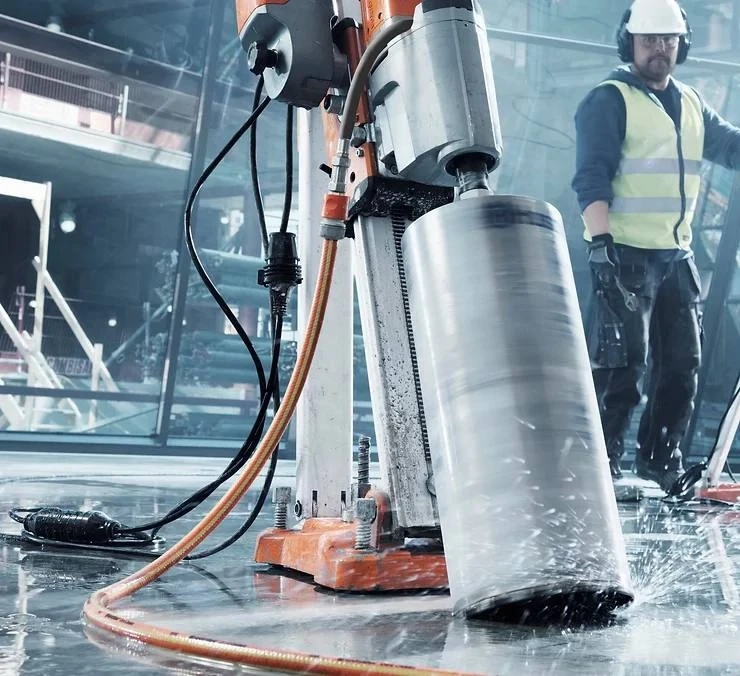Concrete is the base construction material for bridges, buildings, and tunnels. Different tests and processes like concrete scanning, coring, and testing are parts of a healthy construction. Concrete core drilling is a process in which cylindrical samples are extracted from concrete for purposes like testing, analysis, or, primarily, in installing the new system. In this post, we will discuss different applications of concrete coring.
Testing the strength of concrete: When concrete structures are made, it is essential to know the power of the material before starting to use it as a residence. Coring samples helps to assess the compressive strength of the concrete at different depths.
Apart from knowing the compressive strength of concrete, coring samples can also help to test the concrete’s resistance against structural issues like cracking.
Analysis of material: When we construct a structure, analyzing the composition of the aggregates like cement, sand, and concrete ensures that the design specifications are met or not. Strength testing cannot be performed when concrete is wet. Therefore, concrete coring samples are used to analyze the material strength post-construction.
Conditional Assessment: If you are renovating old homes, you must assess their condition by identifying corrosion, deterioration, and structural damage. This requires the extraction of the core from the existing concrete material and testing it in the lab.
Anchor Installation: Anchor testing is an important part of the concrete testing. But before testing, anchors require installation. Core drilling comes in handy for the installation of anchor bolts or other fastening agents in existing concrete.
Structural upgrades: When constructors need to install additional reinforcements such as steel bars and carbon fiber in order to strengthen a structure, coring is required for this upgrade.
Environmental testing: When buying a new home, we need to know about concrete’s resistance against environmental factors like exposure to rain, storms, chemicals, hot and cold cycles, and aggressive substances.
Nondestructive testing validation: We often perform nondestructive tests on concrete that are noninvasive in nature. But in the end, destructive testing is required to back up the information provided by nondestructive tests.
Preserving a Historic building: When working with historical buildings, coring provides insight into the level of degradation in the composition of material. This will help to preserve historical buildings.
Installations of pipeline and duct: One of the biggest applications of core drilling is the installation of electrical wires, plumbing pipelines, and vents for heating, ventilation, and air conditioning systems.
Assessing the bridges and structures:
Bridges lose their elasticity with time. Concrete coring helps in sample extraction, delamination testing, determining slab thickness and presence of voids, etc.
Let us know about the process of concrete core drilling:
Preparation: Before we start to do concrete core drilling, preparation is essential. The first and most crucial thing is to identify the potential obstacles behind the surface. Special equipment such as a GPR scanner is required to identify the location of rebar, post tension cables, and other hidden utilities inside the concrete.
Scanning concrete gives a clear picture of what is inside the concrete and allows us to do the coring in the right places.
Selecting the right size of drill bit: The second step is to understand the wall thickness. For that, you will need to make sure how far the core drill can reach. This step is all about selecting a core drill bit that has the appropriate length.
Marking the drill spot: once the scanning process is complete, the next step is to mark the drilling spot. You can use a pencil for it. This way, the drilling remains precise and right on the spot. When we are aiming for a particular spot on the wall or a floor, precision is of utmost importance.
In case you are working on a renovation project, you need to make sure pencil markings are at the right spot. One wrong mark can open up possibilities of repair.
Configuration of drill: The next step is to configure the core drill. It includes checking the drill to see if it is properly equipped with the material it is supposed to. Configuration helps to choose the right drill and avoid choosing a wrong drill that can damage or cause breakage.
Aligning the drill: It is essential to keep the drill perpendicular to the spot and maintain its alignment while drilling. Any kind of misalignment in the drilling angle can cause deviations from the desired drilling path. As you progress through the drilling, make sure you are in control.
Conclusion:
In this post, we discussed the applications of concrete core drilling. This post also includes a safe guide to the coring process. If you are a homeowner looking to hire concrete scanning, coring, and testing services, make sure you hire a reliable company.
Concrete Insight is one of the best concrete coring companies. They have a team of professionals with years of experience. To hire their services, visit their website now!


